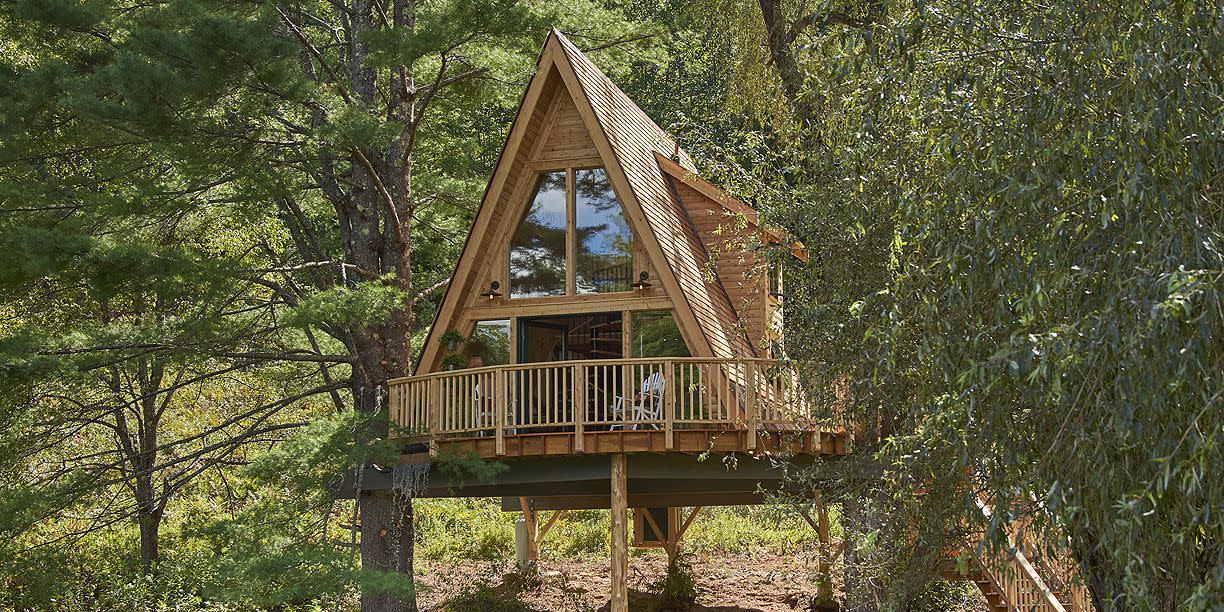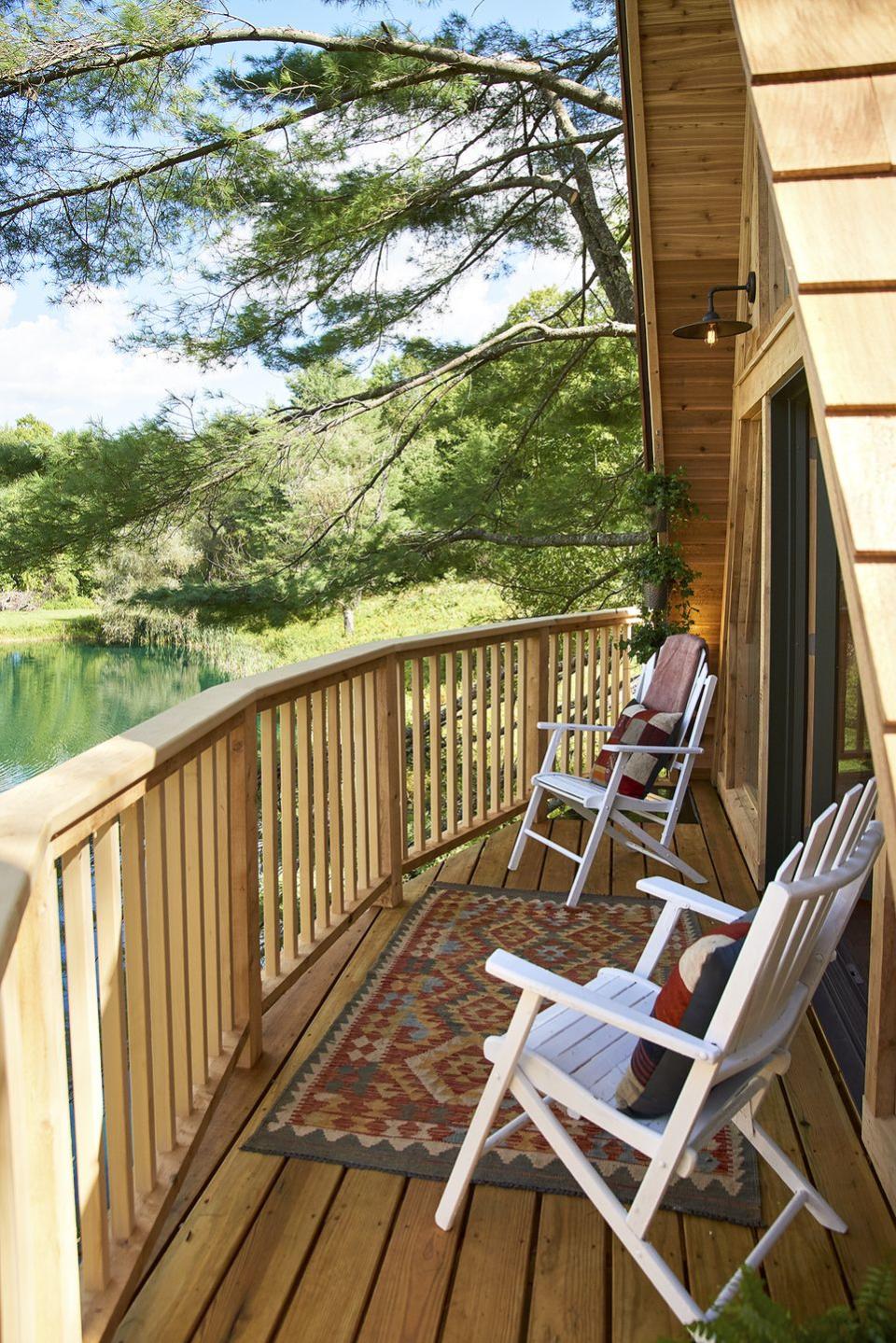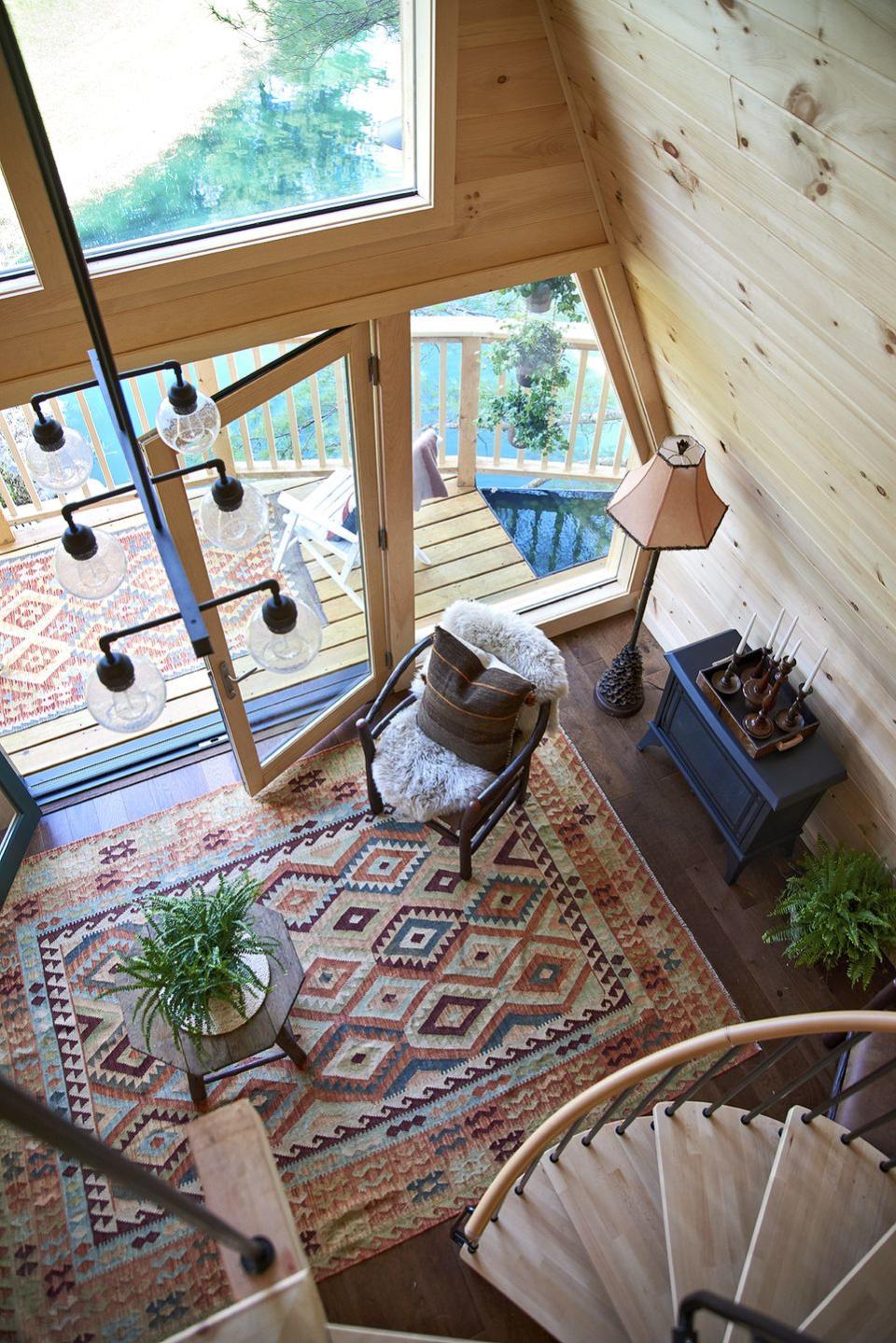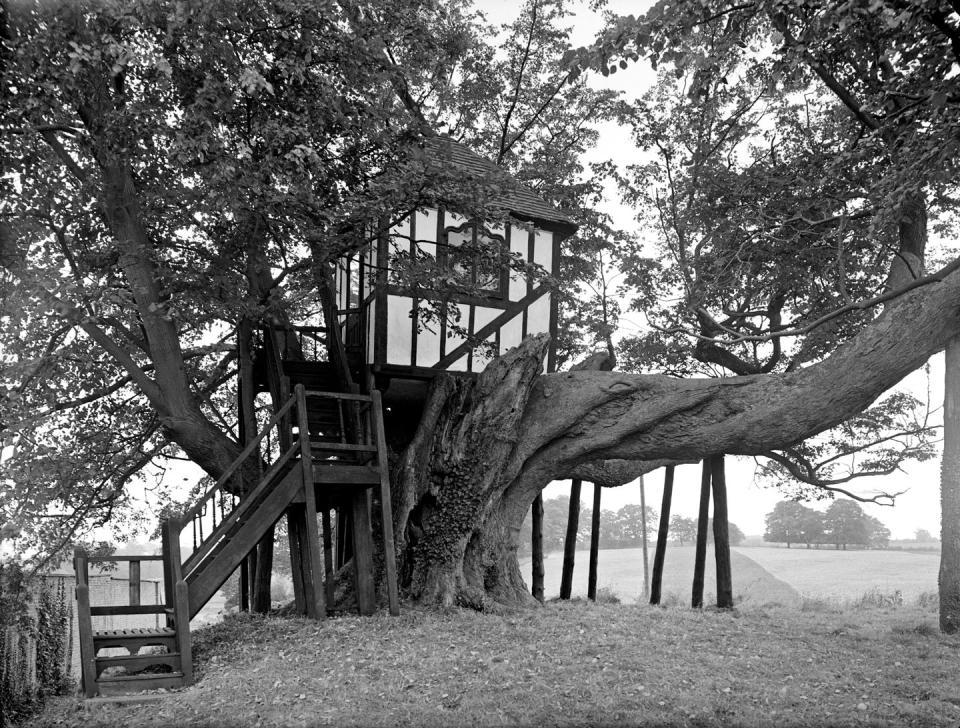Why It Takes 1,500 Hours to Build a 'Treehouse Masters'-Style Treehouse

- Oops!Something went wrong.Please try again later.

There are treehouses—you know, a bunch of planks of wood your parents cobbled together, punctuated by curse words and extra trips to Home Depot for more nails—and then there are Treehouses. As in, literal houses in the trees, with electricity, running water, and the kind of rustic-modern decor that'd make Joanna Gaines weak in the knees. Pete Nelson's devoted his life to both, but the latter's what he's really become known for. And in the process, he's turned the concept from a "Wouldn't that be cool if..." daydream to a full-on movement for thousands of people.
Pete's seen treehouse fever grow alongside his business, which was born out of an all-nighter in 1987. "I couldn't sleep, I was so excited," he says of the moment he envisioned creating full-scale houses suspended in midair. To fund his idea, he built standard houses as well as treehouses, but before long, more and more people started coming to him for the latter, to the point that in 1994, he coauthored Treehouses: The Art and Craft of Living Out on a Limb—the first of half a dozen he's penned—and by 2006, he opened an overnight retreat near Seattle where people could sleep in one of his designs, which he called TreeHouse Point. In 2012, Animal Planet came calling, casting his crew in the reality series Treehouse Masters, where cameras followed Pete and the Nelson Treehouse team as they designed grandiose getaways for people from all walks of life, including celebs (Shaq called on them to build a speakeasy in his yard in one noteworthy episode).

As the show took off, so did searches for "treehouses," rising in the summer and ebbing in the winter, when it gets too cold to think about spending hours outside—even if the end result is heated. Sure enough, one look at Google Trends data reveals just how synonymous Pete's become with the topic: "Nelson treehouses" is the fourth most-popular related query when people search for said houses. He's sandwiched between "best treehouses" and "treehouses for rent"—and interest shows no signs of waning.
"'Treehouse on the brain,' I call it. It's a disease, and man, it's real," Pete says. "People become obsessed."

A big part of the draw, he says, is how the designs evoke a sense of wonder, a call to simpler times, and they provide a literal escape from the tedium of daily life. But does anyone who decides to build a home in the trees really know what they're getting themselves into? If you've found yourself itching to make that dream a reality, you're not alone. Here's what you need to know.

Which Trees Are Best for Treehouses, Anyway?
Just because you've got a gnarly, twisty, massive tree—or seven—in your backyard doesn't mean they're ideal candidates for supporting a house. "The best trees are long-living trees: The basic ones are oak, maple, redwood and douglas firs. You'll see a lot of those all over the country, and in the right environment, they can last hundreds of years," Pete says, citing Pitchford Estate in England as an example.

Dubbed the oldest in the world, the treehouse was first mentioned in 1692, renovated in 1760, then again in 1980. You can still tour it to this day, proving that as novel as the concept is, when they're properly engineered and cared for, a treehouse is no novelty.
"It's all about maintenance, like any structure," Pete says. "If you're not clearing leaves out of gutters and debris that might pile away, it doesn't take long before everything goes to shit. But if [you do, and] you're in the right trees—like a good old oak tree—the house could last as long as the tree."

So, How Much of a 'House' Can My Treehouse Be?
The limit does not exist. At least, Pete hasn't found one. "We put a hot tub in a tree about a year ago," he recalls. "A natural cedar hot tub that was beautiful." (He also installed a waterfall off the balcony of another design in Vermont.)

Nelson's team has regularly designed treehouses with fully functional bathrooms, multiple bedrooms, kitchenettes (many with four-burner cooktops, microwaves, and full-size fridges), even modern amenities, like central air conditioning and heating. The bigger the house, the lower it typically is to the ground—"because trees move around so much," Nelson notes—and, occasionally, it's supported by additional posts, along with the trees.
"People who want to get up higher than the main treehouse might want to add a crow's nest," he adds. It's been a popular ask, along with ensuring there's room (and budget for) a loft space and a bridge connecting them from the main treehouse to a "satellite hangout" nearby. "It's that Swiss Family Robinson fantasy treehouse idea," he explains.
If you need further proof that treehouses truly can be anything you want them to be, look no further than this Star Wars-inspired, 1,000-square-foot wonder Nelson Treehouse designed.
What Do You Actually Need to Build a Treehouse?
Beyond wood and quality trees, of course. Pete's gotten this question so many times he started selling treehouse designs, equipment, and even a full instructional booklet, Treehousing: The Instructional Guide, on his website. One of the most critical components is a set of Treehouse Attachment Bolts—or TABs, they're known in the industry—which does exactly what you might think: It attaches the tree to the platform of the house.
"It's a really effective way to connect to trees without hurting them," Nelson says. He worked with arborists to study how the trees would respond to TABs inserted into them. "The moment you penetrate a tree like that, a signal goes to send sap and compartmentalize the wound, blocking all possible arteries from airborne pathogens. Basically, the tree's signaling it's got a problem, and it goes about repairing itself."
The tree won't heal itself, he explains, but it sends stronger, denser wood to the edge of the wound, and over time, it starts to look like pursed lips around the bolt. With the right trees, TABs, and a plan, you're all set to start building.

How Much Is This Going to Cost Me?
While Nelson built his first treehouse—a 250-square-foot hideaway—for $7,000, don't expect to get away quite so lucky. "Project creep is real," Nelson laughs. Often, the dream starts innocently enough: Why not add electricity? And if you have electricity, you should probably have a coffeemaker. But you'll want a mini fridge and a cooktop, so you can enjoy a snack to go with it. But then you'll want to wash your mug and plates when you're done, so you'll need a sink—and plumbing. And if you're plumbing the place, you might as well build a bathroom. And, and, annnnd...before long, that "simple" treehouse winds up costing you six figures. Maybe even mid-six figures.
"If you look at a treehouse that's fully appointed, treat it like an addition to your home," Nelson explains. "If you're adding a bathroom or kitchen to your home, you're quickly in the $100,000 range."
The same goes for treehouses. It's one thing if you want a covered area to read books and hang out, maybe running an extension cord to power a light; It's tacking on running water and enough electricity to power appliances that drives up costs, fast. Nelson estimates about 80 percent of his projects wind up including a kitchenette and bathroom.
"If there's a bathroom and a kitchen, you've got to factor in the hard costs of construction," he says. "That could mean $150,000 in labor." (A typical Treehouse Masters house takes about 1,500 hours to build, Nelson explains, adding that construction will likely cost you $100 an hour in labor. And if you want Pete's team to do it all for you, well, that starts at $300,000.)
Nelson's rule of thumb? Expect your total costs to be 60 percent labor, 40 percent materials. Getting those numbers closer to Nelson's first, $7,000 treehouse build means dramatically simplifying your design, getting really handy, and becoming an Indiana Jones-caliber scavenger.
"There's a great tradition all over the world of scrounging for materials: going on Craigslist, or scrounging at a contractor's," he says. That's exactly what Nelson did for his first treehouse, and why the 250-square-foot design cost so little: That $7,000 was in materials alone, not counting the cost of his time.
"I was trying to do it for no money," Nelson explains. "I was tight as a tick about it."
Can I Test-Drive One Before Committing to It?
At this point, you may be questioning your commitment. Will you even like being a treehouse person? Is the effort worth it? Should you take up a simpler hobby, like learning to needlepoint in Mandarin instead? There are plenty of places that will let you spend the night in a treehouse (Nelson owns two properties himself for that very purpose). Fair warning, though: It may only intensify your obsession, especially when you consider the rental business you could have going. Like Nelson said, Treehouse on the Brain is real. All too real.
You Might Also Like

